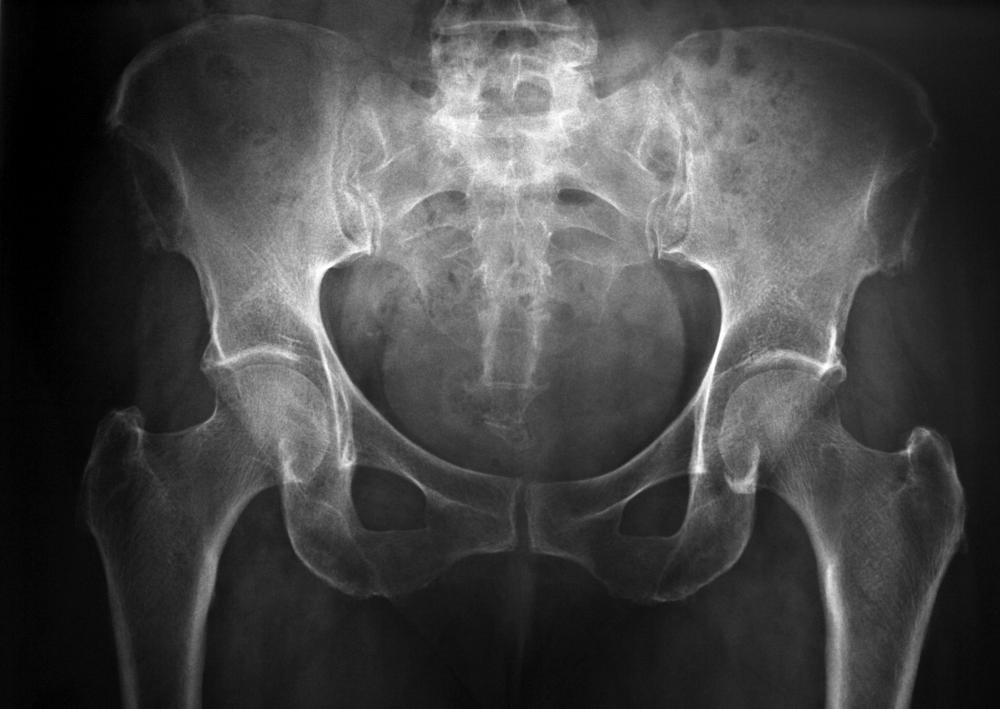At TheHealthBoard, we're committed to delivering accurate, trustworthy information. Our expert-authored content is rigorously fact-checked and sourced from credible authorities. Discover how we uphold the highest standards in providing you with reliable knowledge.
What is Prolapsed Bladder?
A prolapsed bladder is also called a cystocele. When cystocele is present, the bladder has sunk down into the vagina due to weakness in the pelvic floor muscles that support it. The most common causes for this condition are childbirth, hysterectomy, obesity, and weakening in the pelvic floor muscles after menopause.
Some people may be unaware that they have a prolapsed bladder when the area of prolapse is small. They may not have any symptoms, and the condition might go unnoticed unless a gynecologist catches it in a yearly exam. When more of the bladder has sunk into the vagina it can cause a variety of signs and symptoms.

Symptoms can include the sensation that the bladder is never fully empty and mild to severe incontinence. Urinary tract infections become more frequent, and women may experience some discomfort when they have intercourse. Probably the most obvious sign is that there may be some tissue bulging outside of the vagina or right at its entrance, that can be small or large.

If a woman notices the symptoms, she should see a doctor, who will probably perform a vaginal examination and ask questions about symptoms present. This condition is usually fairly easy to detect through physical exam. Doctors may wish to perform some tests like x-ray or ultrasound to gauge full area of prolapse.
Treatments for prolapsed bladder can depend upon severity. When the cystocele is mild, and a woman plans to have more children, doctors may advocate that no treatment occur because surgical intervention is likely to be required again after another delivery. Some temporary measures like inserting a small rubber ring called a pessary in the vagina or using large tampons may help keep the bladder in place and minimize any symptoms. Using estrogen creams, which can cause the pelvic floor muscles to tighten slightly, may help those women who experience cystocele after menopause. However this treatment comes with an increased risk of breast cancer and risks versus benefits of estrogen use must be weighed carefully.
Surgical treatment can address severe cases of bladder prolapse. However, surgery is not always fully effective, and might need to be repeated later because the pelvic floor muscles can still get weaker. In fact they tend to weaken as women age.

There are several ways to address prolapsed cystocele non-surgically and without medical intervention, and these are additionally great preventatives for the condition. The gold standard preventative and also means by which mild cystocele may be helped is to do Kegel exercises, which strengthen pelvic floor muscles. When women are unsure how to do these there are instructions online, but they may be better helped by working with a doctor to make sure they’re performing them correctly.

Other things that can cause the condition can include repeated heavy lifting and straining when having bowel movements. Though prolapsed bladder isn’t always preventable, some women may avoid this condition if they do not lift unsafe weights on a regular basis, and if they address any issues of constipation when they occur by taking fiber or eating a high fiber diet to keep bowel movements soft and eliminate straining. Women who are overweight should be aware that prolapsed bladder tends to be more common among the obese, and losing weight can help reduce risk. Even with these preventative measures, cystocele can still occur, and aging does result in weakening of pelvic floor muscles.
AS FEATURED ON:
AS FEATURED ON:














Discussion Comments
If you experience any of the prolapsed bladder symptoms mentioned in this article, it is vital that you seek medical advice and a diagnosis. Even if your problem isn't a prolapsed bladder, symptoms such as the urge to go or incontinence may be signs of other problems.
Post your comments